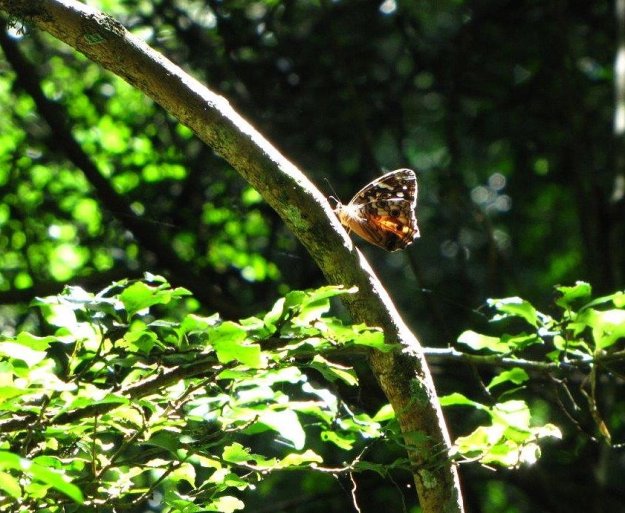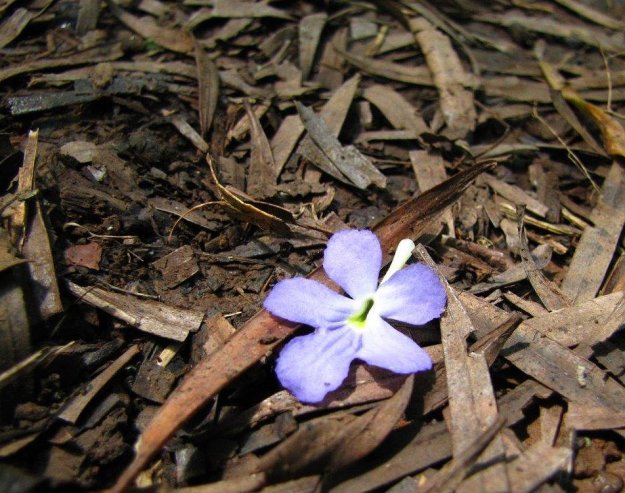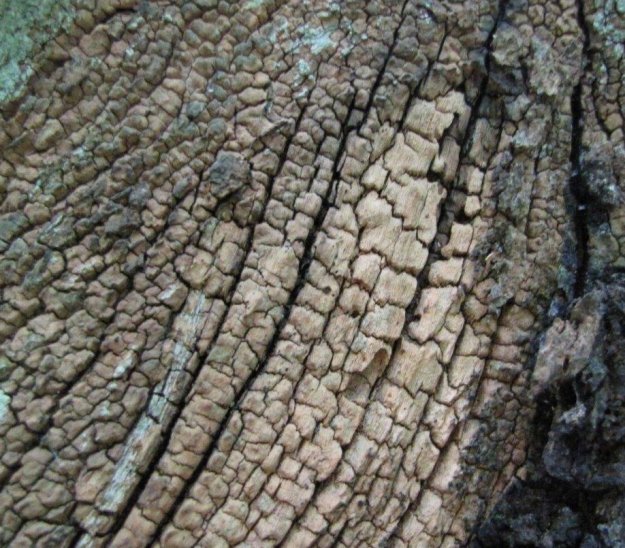It was at Milestone in Balgowan that the Conservancy movement in South Africa began. Peter and Priscilla Francis, Tony Carr and Nick Steele got the ball rolling in the late 1970’s and now there are many Conservancies in the KZN Midlands and around the country.
In 2007, after the Milestone forest had received Natural Heritage Site Status, David Johnson and Iain Guthrie led a walk along the paths and Peter and Priscilla planted a Black Stinkwood (Ocotea bullata) to celebrate. Iain recalled many happy hours in his youth scrabbling through the undergrowth learning about the trees and watching birds. In particular, he pointed out the three species of Yellowwood trees found in Milestone – Podocarpus falcatus, Podocarpus latifolious and Podocarpus henkelli. “Sadly yellowwoods were exploited heavily for their timber in the 1800’s and now have to be protected by law. It is wonderful that this piece of forest on Milestone has been well looked after by the Francises.”
David Johnson told the group that Podocarpus had an ancient lineage. “Milestone is a living monument to our tumultuous climatic history. Afro-Montane forest has its ancestral home in the highlands of East Africa – from their is colonised southwards during the wetter periods of the Peistocene. Yellowwoods are also found in South America and Australia, but not on any Northern continent, this is best explained by continental drift. Milestone is our own piece of the Gondwana super-continent, along with Selaginella kruassiana which covers the forest floor.”
On a recent wander through the forest, I discovered that the magic of Milestone is alive and well. These are a few enchanting discoveries.
Towering trees create dappled glades
where ferns and orchids thrive.
A tiny butterfly catches the light
Hollow Lemonwoods provide hiding places for little creatures
A Spotted Eagle Owl feather, dropped in flight
Fungi everywhere – doing their colourful job of recycling nutrients
Tiny mauve Streptocarpus flowers, fallen on the forest floor
A colourful Midlands Dwarf Chameleon
Trees twined with creepers, including Dumasia villosa
Such interesting textures in the bark of the trees – some rough,
others papery and peeling.
Silky spider webs
Bright yellow splotches of Argylobium tomentosum in flower
The fruit of Eugenia natalensis provide a feast for the birds
Along the trail is a green cathedral made up of Podocarpus henkelii which are endemic to the region and found no where else besides the moist inland forest of the Eastern Cape and KZN. A magnificent and peaceful spot.
Splashes of orange Crocosmia in the understory.
Milestone Forest hosts a regular walk on the first Friday of every month – next one 4 April. 09h00 until about 11h00. Donation R20 to the Balgowan Conservancy. Phone Marilyn 082 427 3365 to book.
“I just love being in the forest and spend a lot of time exploring and listening to the birds,” says Marilyn Revesz. “I will be so pleased to share this with other people.”






















Beautiful blog and photos Nikki! What an inspiration Milestone is and it’s guardians! 🙂 Christeen
LikeLike
Well done Nikki for the gorgeous photos and to the Francis family for sharing their bit of paradise, which the have conserve so wonderfully
LikeLike
The Conservancies movement has definitely been worthwhile! Look how far it’s come! Certainly looking forward to joining a walk in Balgowan soon.
LikeLike
Having watched that Ocatea bullata being planted in 2007, I still feel a sense of optimism for both that tree and the forest which is delightful. May they, or their descendants, be there forever
LikeLike
Pingback: Priscilla Francis 1922-2014 | Midlands Conservancies Forum
Pingback: Walking – Plant Abundance